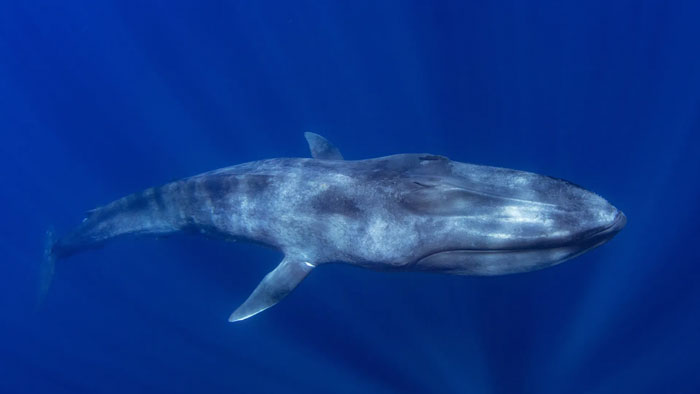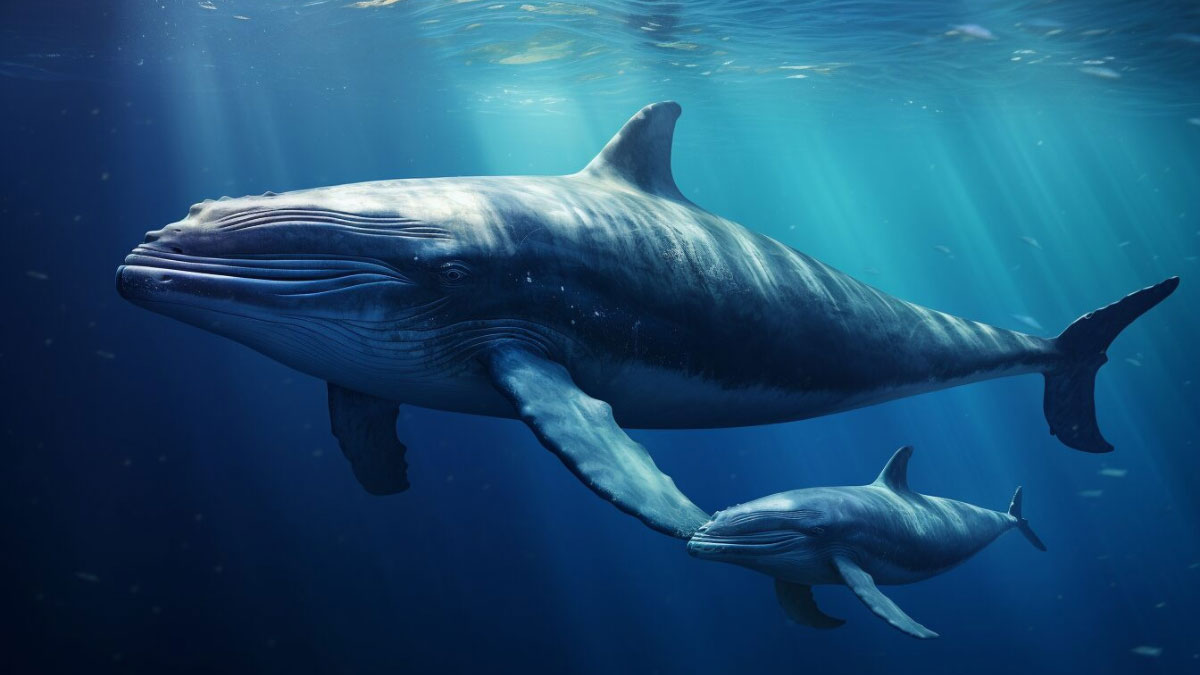How Much Does a Blue Whale Weigh? Facts and Scientific Data
The immense size and weight of blue whales make them the largest animals to have ever existed on Earth. These magnificent marine mammals have fascinated scientists and nature enthusiasts for generations, with their extraordinary mass setting them apart from all other creatures.
Average Weight Ranges
The typical weight of a blue whale varies significantly based on several factors. Adult blue whales generally weigh between 100 and 200 tons (90,000 to 180,000 kilograms)[1]. Female blue whales tend to be heavier than males, with Antarctic blue whales being the largest of all subspecies[2].
Weight Distribution by Region
Different populations of blue whales show distinct weight characteristics:
Northern Hemisphere:
- Males average 100 metric tons
- Females average 112 metric tons[1]
Eastern North Pacific:
- Males average 88.5 tons
- Females average 100 tons[1]
Antarctic Region:
- Males average 112 tons
- Females average 130 tons[1]
Record-Breaking Weights
The largest recorded blue whale was a female hunted in the Southern Ocean, Antarctica, weighing approximately 190 tons[2]. Recent scientific calculations suggest that the theoretical maximum weight for a 33-meter blue whale could reach 252-273 tons[1].

Weight Components
Organ Weights
The internal organs of blue whales are proportionally massive:
- Heart: Weighs up to 400-600 pounds (180-270 kilograms)[6]
- Tongue: Comparable to an elephant’s weight, approximately 4.5 to 6.8 tons[6]
- Blood vessels: Large enough for a human to crawl through[6]
Birth Weight and Growth
Blue whale calves are born weighing between 5,000 to 6,000 pounds[3]. Their rapid growth is remarkable:
- Gain approximately 200 pounds per day in their first year[5]
- Consume 66 gallons of milk daily[6]
- Weight gain of about 10 pounds per hour[6]
Factors Affecting Weight
Seasonal Variations
Blue whales experience significant weight fluctuations throughout the year due to their feeding patterns and migration cycles:
- Summer Feeding Period:
- Can gain up to 50% additional body mass
- Consume up to 6 tons of krill daily
- Store energy in blubber layers
- Winter Fasting Period:
- May lose 25-40% of their body weight
- Rely on fat reserves during breeding season
- Minimal feeding during migration
Geographic Variations
Weight differences are notable across different ocean regions:
Pygmy Blue Whales:
- Found in Indian Ocean and South Pacific
- Generally 20-30% lighter than Antarctic blue whales
- Average weight ranges from 80-90 tons
Antarctic Blue Whales:
- Largest of all subspecies
- Females can exceed 150 tons
- Males typically range from 112-120 tons
Age-Related Weight Changes
The relationship between age and weight follows a distinct pattern:
- Juvenile Stage (0-5 years):
- Birth weight: 2.5-3 tons
- Growth rate: 200 pounds per day
- Reach 50% of adult weight by age 3
- Adolescent Stage (5-10 years):
- Slower growth rate
- Reach 75% of adult weight
- Increased muscle mass development
- Adult Stage (10+ years):
- Maximum weight achieved
- Seasonal fluctuations become more pronounced
- Weight stability in healthy individuals
Scientific Measurement Methods
Traditional Techniques
Scientists have employed various methods to determine blue whale weights:
Whaling Era Measurements:
- Direct weighing of harvested whales
- Segmental measurements
- Displacement calculations in water
Modern Non-Invasive Methods:
- Photogrammetry using drones
- 3D modeling technology
- Acoustic measurements
Advanced Technology in Weight Assessment
Recent technological developments have revolutionized whale weight estimation:
- Aerial Photogrammetry:
- Uses high-resolution cameras
- Measures length, width, and girth
- Calculates volume and density
- Accuracy within 5% of actual weight
- Digital Modeling:
- Creates detailed 3D representations
- Accounts for body composition
- Considers blubber thickness
- Incorporates seasonal variations
Comparative Analysis
Weight Comparison with Other Animals
To put blue whale weight in perspective:
| Animal | Average Weight (tons) |
|---|---|
| Blue Whale | 130-150 |
| African Elephant | 6-7 |
| Sperm Whale | 35-45 |
| Fin Whale | 70-80 |
| Dinosaur (Argentinosaurus) | 80-100 |
Historical Context
The evolution of blue whale weights shows interesting patterns:
- Prehistoric Era:
- Gradually increased in size over millions of years
- Reached current size approximately 4.5 million years ago
- Benefited from abundant food sources
- Modern Era:
- Weights declined during commercial whaling
- Recovery observed in protected populations
- Current weights approaching historical averages
Biological Implications of Weight
Metabolic Requirements
The enormous weight of blue whales directly influences their energy needs:
Daily Caloric Requirements:
- Consume 20-50 million calories per day
- Filter up to 6 tons of krill
- Process 2,200 gallons of water per gulp
Energy Efficiency:
- Highly efficient metabolism despite size
- Convert approximately 80% of consumed energy
- Specialized digestive system adaptation
Physiological Adaptations
Blue whales have developed unique features to support their massive weight:
Cardiovascular System:
- Heart pumps 58 gallons per beat
- Blood vessels accommodate high volume
- Specialized oxygen storage mechanisms
Skeletal Structure:
- Reinforced vertebrae
- Flexible ribcage
- Dense bone composition
Environmental Impact
Ecosystem Role
The weight of blue whales significantly influences marine ecosystems:
Nutrient Cycling:
- Release massive amounts of iron through waste
- Support phytoplankton growth
- Contribute to ocean carbon sequestration
Food Web Dynamics:
- Consume up to 40 million krill daily
- Influence prey population distribution
- Impact marine food chain balance
Conservation Implications
Understanding weight patterns is crucial for conservation:
Population Health Indicators:
- Weight trends reflect ecosystem health
- Individual fitness assessment
- Reproductive success correlation
Climate Change Effects:
- Potential impact on prey availability
- Changes in migration patterns
- Altered feeding behaviors
Frequently Asked Questions
Common Queries About Blue Whale Weight
Q: How much does a blue whale’s tongue weigh?
A: A blue whale’s tongue weighs approximately 4.5-6.8 tons, roughly the weight of an adult elephant.
Q: Can blue whales gain weight throughout their lives?
A: Blue whales typically reach their maximum weight by age 25, after which their weight primarily fluctuates seasonally.
Q: How much does a blue whale calf weigh at birth?
A: Newborn blue whale calves weigh between 5,000-6,000 pounds (2.5-3 tons) at birth.
Q: What’s the heaviest blue whale ever recorded?
A: The heaviest documented blue whale was a female caught in Antarctica, weighing approximately 190 tons.
Research Challenges
Current Limitations
Scientists face several obstacles in studying blue whale weights:
Technical Challenges:
- Difficulty in obtaining accurate measurements
- Limited access to live specimens
- Environmental variables affecting data
Research Constraints:
- High cost of studies
- Weather-dependent observations
- Equipment limitations
Future Research Directions
Emerging technologies and methods show promise:
Innovative Approaches:
- Satellite tracking with weight estimation
- Advanced sonar technology
- Machine learning applications
- Genetic analysis correlation
Research Goals:
- More accurate weight estimation
- Better understanding of growth patterns
- Improved population monitoring
- Enhanced conservation strategies
Key Takeaways and Conclusions
The extraordinary weight of blue whales represents a remarkable achievement of natural evolution. Their massive size, ranging from 100-200 tons, showcases nature’s capacity for creating giants while maintaining biological efficiency.
Weight Management in Marine Ecosystems
Understanding blue whale weight is crucial for:
- Marine ecosystem balance
- Conservation efforts
- Climate change impact assessment
- Population health monitoring
Future Outlook
Continued research and conservation efforts remain essential for protecting these magnificent creatures and understanding their role in marine ecosystems.
Practical Applications
This knowledge benefits various fields:
- Marine biology research
- Conservation planning
- Environmental protection
- Educational programs
Citations:
[1] https://en.wikipedia.org/wiki/Blue_whales
[2] https://www.vedantu.com/animal/blue-whale
[3] https://www.marinemammalcenter.org/animal-care/learn-about-marine-mammals/cetaceans/blue-whale
[4] https://newportwhales.com/blue-whale-facts.html
[5] https://www.nationalgeographic.com/animals/mammals/facts/blue-whale
[6] https://danawharf.com/blog/the-ultimate-guide-to-blue-whales/
[7] https://nammco.no/blue-whale/
[8] https://www.fisheries.noaa.gov/species/blue-whale
[9] https://www.uaf.edu/universityrelations/guidelines/web-social/web/seo.php







